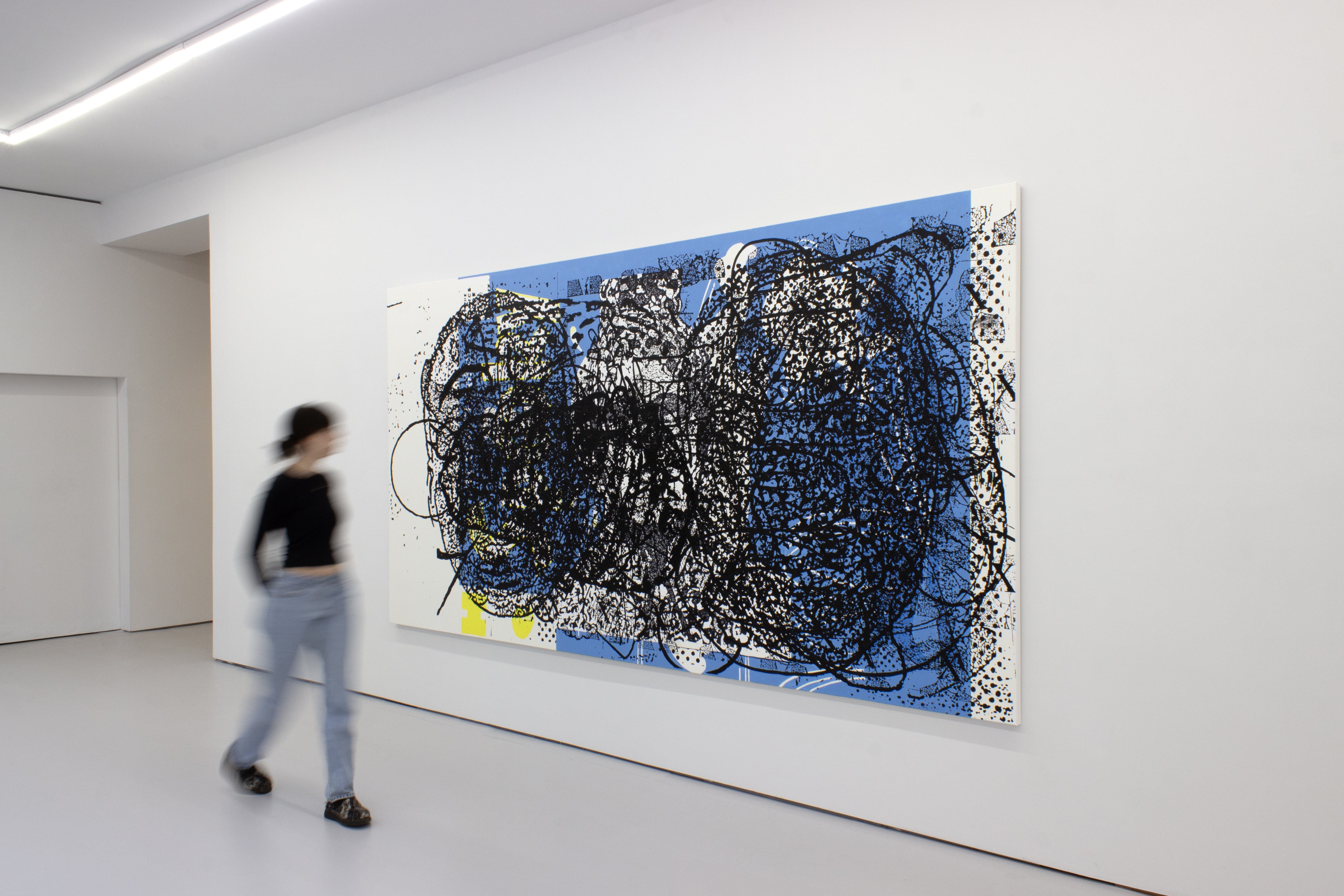
Confundere
Scott Short
2.28 — 3.28




























At this point of his effort man stands face to face with the irrational. He feels within him his longing for happiness and for reason. The absurd is born of this confrontation between the human need and the unreasonable silence of the world [1]
Scott Short’s exhibition Confundere engages with the theory of artificial reproduction, wherein the act of creating an image—through mechanical or manual process—is inescapably tied in its translation to some form of recollective distortion. Through a series of works that blur the lines between abstraction and representation, Short challenges traditional notions of artistic authenticity and the role of technology in shaping visual culture. Drawing on the idea that all art is a form of reproduction, his practice challenges traditional notions of creative expression by acting as a participant rather than the operator of the copy. Intentional and accidental mark are incorporated through muscle memory, a corporeal system honed by the transfer of reference material to canvas by brush, lending textural nuance through sustained, sacrificial labor. The works distill a collaboration between man and machine, echoing and layering collective memory against itself while bridging both perspectives. Short employs images as marks, signifiers or vehicles for meaning, rather than striving for representations of reality or painterly methods of illusion.
In Confundere, Short’s figures and forms oscillate between recognizable imagery and dissociations of pictorial utility. Borrowed imagery collapses upon itself, responsive to the echoes of time. The process itself becomes an integral part of the narrative, exposing both human inclination and mechanical interference. He draws on postwar iconography, political figures, and the absurdity of cartoonish depictions to express a world where reason is constantly undermined by the irrational. At the core of the work is a sense of fragmentation—historical references collide with the contemporary condition, all distorted by the act of reproduction. These elements mirror the fragmentation of modern life, where clarity and meaning slip through our fingers like sand.
With a deep respect for the slow, tactile nature of painting, Short’s work resists the allure of convenience and mass production, instead celebrating the quiet beauty of layered depth, scale, and subtle imperfections. In an era of relentless visual bombardment—where ads, social media, and algorithmic feeds dictate the tempo of daily life—Scott’s work resists the churn. His commitment to maintaining intimacy within large-scale works underscores his belief that proximity, detail, and patience reveal a deeper emotional resonance. His practice embraces slowness, rejecting the immediacy of disposable imagery in favor of a meditative, anti-convenient approach. Within this, he challenges artificial legibility—the streamlined clarity of mass-produced visuals—by disrupting expectations of form, meaning, and recognition. Drawing from Walter Benjamin’s notion of the aura, Short challenges the idea that an image’s meaning is tied to its origin. In this context, he pushes against the concept of the original in art, emphasizing the importance of the copy, the reproduction, and the imperfections that arise from these processes as circumstantial outliers. This is a practice of operating without a fixed intent, allowing the work to unfold naturally—a practice of being in the moment, outside of time, yet deeply entrenched in it. In a world where the attention economy thrives on speed and surface-level engagement, his work demands something different: time, patience, and the willingness to sit with ambiguity. Each piece lingers in the in-between, a quiet defiance against the hyper-saturated landscape of contemporary visual culture.
- Camus, Albert, 1913-1960. 1955. The Myth of Sisyphus, and Other Essays.. New York, Knopf.